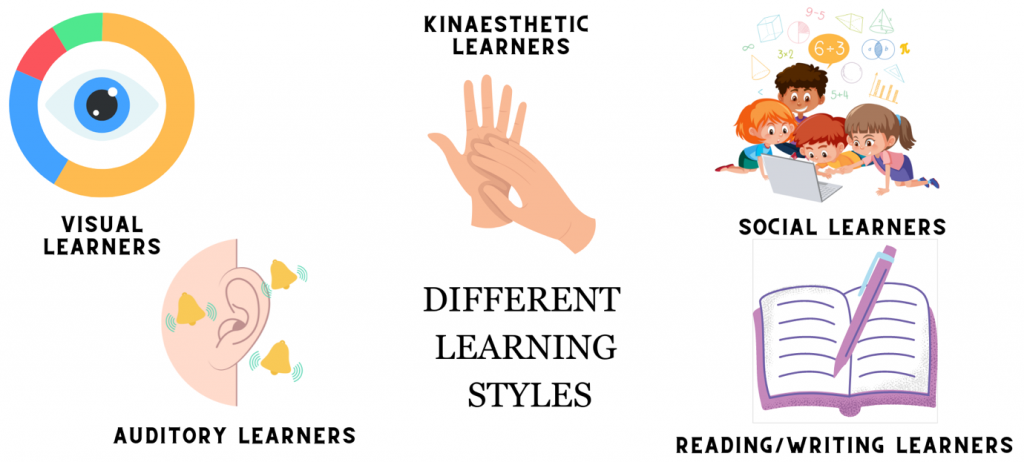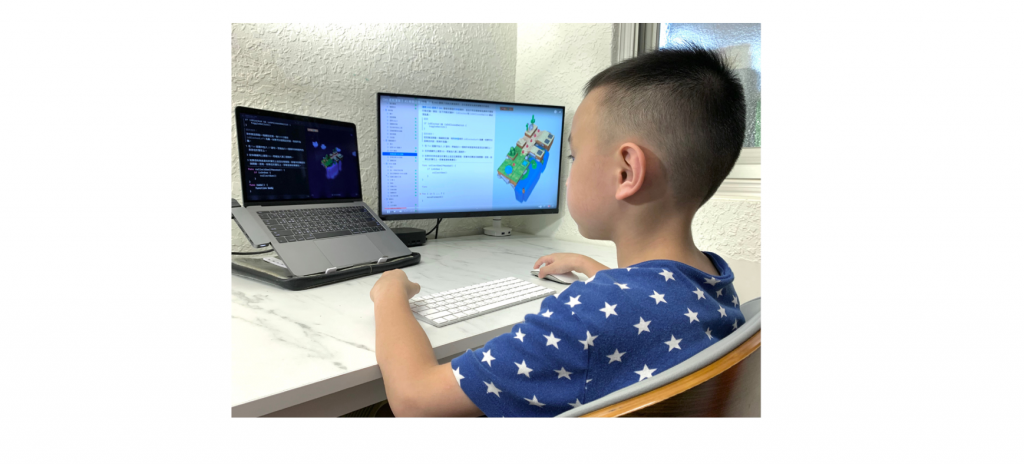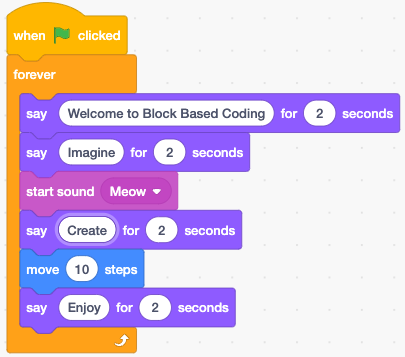In today’s technology-driven world, coding has become an essential skill. Recognizing its importance, many educational institutions and organizations are now offering coding programs tailored specifically for beginner kids. However, it is crucial to ensure that these programs are inclusive and able to accommodate different learning styles and cater to children with special needs. By doing so, we can create a supportive environment that fosters learning and participation for all children.
In this blog, we will explore the ways in which coding programs can be adapted to accommodate diverse learning styles and cater to children with special needs, making coding education accessible and enjoyable for every child.
What is Coding and How can it help my Child?
Coding refers to the process of creating instructions for computers or other devices to perform specific tasks. It involves writing precise and structured sequences of commands using a programming language. Coding allows individuals to create software applications, websites, games, and various digital tools.
Coding can provide several benefits for children:
- Problem-solving skills: Coding encourages logical thinking and problem-solving abilities. It requires breaking down complex problems into smaller, manageable parts and developing step-by-step solutions.
- Creativity and Innovation: Coding offers a creative outlet for children to express themselves. It empowers them to create their own projects, design interactive experiences, and bring their ideas to life.
- Computational Thinking: Coding promotes computational thinking, which involves approaching problems in a way that a computer can understand. This type of thinking involves breaking down problems, organizing data, recognizing patterns, and creating algorithms.
- Logical Reasoning: Coding enhances logical reasoning skills by teaching children to identify cause-and-effect relationships, make connections, and follow precise instructions.
- Collaboration and Communication: Many coding projects involve teamwork, encouraging children to collaborate, communicate effectively, and share ideas. They can learn to work together, solve problems collectively, and appreciate diverse perspectives.
- Future Employability: In an increasingly digital world, coding skills are becoming highly valuable. Learning to code at a young age can open doors to future career opportunities, as programming skills are in demand in various industries such as technology, engineering, design, and even creative fields.
- Digital Literacy: Coding helps children become more proficient in using and understanding technology. It equips them with the ability to navigate the digital landscape, comprehend how software works, and make informed decisions about technology usage.
There are numerous resources available to help children learn coding, ranging from interactive online coding platforms and games to online tutorials and coding clubs. It’s important to select age-appropriate tools and materials that align with your child’s interests and learning style.
Related Reading
- 21st Century Skills | The Compelling Necessity
- Unlock the Digital World: Why Kids Need Digital Literacy Now!
Understanding Different Learning Styles:
As parents, it’s important to recognize that each child has a unique learning style. Understanding and catering to these individual learning styles can greatly enhance your child’s educational experience.

Here is a guide to help you better understand different learning styles and how you can support your child’s learning journey:
- Visual Learners: Visual learners grasp information best through visual aids such as charts, diagrams, and images. They benefit from seeing information in a clear and organized format. To support visual learners, provide them with visual materials, use color-coding techniques, and encourage them to create their own visual representations of concepts.
- Auditory Learners: Auditory learners learn best through listening and verbal communication. They thrive in discussions, lectures, and audio-based learning activities. To assist auditory learners, engage in conversations with them, encourage them to read aloud, and provide access to audio resources such as audiobooks or educational podcasts.
- Kinesthetic Learners: Kinesthetic learners learn by doing and engaging in physical activities. They learn best through hands-on experiences and real-life applications. To accommodate kinesthetic learners, incorporate tactile materials, encourage interactive learning activities, and provide opportunities for movement during study sessions.
- Reading/Writing Learners: Reading/writing learners prefer to process information through reading and writing. They excel in reading and taking notes, as well as writing summaries or essays. To support reading/writing learners, encourage them to read extensively, provide writing prompts and opportunities for note-taking, and suggest creating flashcards or written summaries to reinforce learning.
- Social Learners: Social learners thrive in collaborative settings and learn best through interaction with others. They enjoy group discussions, teamwork, and peer learning. To nurture social learners, encourage group projects, organize study groups, and provide opportunities for them to explain concepts to others or engage in cooperative learning activities.
Remember that most individuals have a combination of learning styles, with one or two dominant styles. It’s important to observe your child and identify their preferred learning style(s). By incorporating various strategies that align with their learning style(s), you can create a supportive environment that enhances their learning and academic success.
Furthermore, encourage your child to explore different learning methods and discover what works best for them. This self-awareness will empower them to take ownership of their learning process and develop effective study habits.
Adapting Technology for Coding
Technology has the incredible ability to foster inclusive learning experiences for children with special needs. By adapting tools and resources, we can tailor coding education to meet individual requirements.

Visual programming languages, voice-activated coding, and gamified platforms can be modified to accommodate diverse abilities and learning styles. Through personalized approaches, technology empowers children to unleash their creativity, develop problem-solving skills, and thrive in coding. By embracing adapted technology, we create an inclusive environment where every child can participate, grow, and excel in the world of coding.
Embracing the Power of Visual Learning
Visual learning proves to be a remarkable approach for teaching coding to children with special needs, opening doors to their coding potential in an inclusive and engaging manner.
Through vibrant visual elements like colorful blocks and flowcharts, coding concepts become tangible and accessible. These visual representations break down complex ideas into digestible pieces, enabling children to grasp coding concepts with greater ease. The cause-and-effect relationships in coding become more apparent as children visually connect different code blocks or commands.
Visual coding tools, such as Scratch or Blockly, provide interactive platforms where children can actively engage in hands-on coding. By dragging and dropping visual blocks to create code, children can directly interact with the coding process, reinforcing their learning and retention.

The multi-sensory engagement of visual learning further enhances the coding experience for children with special needs. Visual cues, colours, and shapes stimulate multiple senses, making the learning journey more dynamic and memorable.
Visual learning also allows for personalized adaptation, as coding platforms often offer customization options. Children can adjust the visual representation to suit their preferences, ensuring that the coding experience is tailored to their specific needs. This promotes inclusivity and empowers each child to engage with coding in a way that resonates with them.

Furthermore, visual coding fosters creativity, as children can visually design characters, create animated stories, or build interactive games. They can unleash their imagination, turning their coding projects into unique expressions of their creativity.
Collaboration features in visual coding tools facilitate peer learning and a sense of community. Children can share and remix each other’s projects, inspiring one another and fostering a collaborative environment.
Voice Assistants in Coding Programs
At first glance, it may seem improbable, but the reality is that voice assistants can play a significant role in coding programs for kids with special needs.

- Voice assistants like Alexa, Siri, and Google Voice Assistant are familiar technologies that we use daily for tasks like setting alarms, ordering food, and booking movie tickets.
- These same voice assistant technologies can be leveraged to empower children with special needs in coding programs.
- Voice-activated coding allows children to engage in hands-free coding by dictating instructions and transforming them into code.
- Voice assistants bridge the accessibility gap in coding, making it more inclusive and interactive.
- Voice assistants provide real-time feedback, guiding children through coding challenges and reinforcing their learning.
Integrating voice assistants into coding programs opens up possibilities for independent exploration, nurtures creativity, and boosts coding confidence. Voice assistants serve as invaluable companions, enabling children to embark on a coding adventure with their voice as their guide.
Embracing the Tangible: Physical Computing
Physical computing offers a remarkable avenue to introduce children with special needs to coding and electronics through hands-on interaction with hardware components. This approach not only fosters the development of fine motor skills and coordination in children with motor impairments but also sparks their curiosity and creativity.
By programming sensors and motors, children can explore cause and effect relationships in the physical world. For instance, they can create a setup where a sensor detects someone entering a room and triggers a light to turn on. This immersive and interactive experience allows children to grasp programming concepts while actively engaging with their surroundings.
Physical computing transforms coding from an abstract concept to a tangible and exciting adventure. It provides a bridge between the digital and physical realms, empowering children with special needs to understand how technology can interact with the world around them. Through this hands-on approach, they develop problem-solving skills, logical thinking, and a deeper understanding of the possibilities offered by coding and electronics.
Moreover, physical computing promotes an inclusive and collaborative learning environment. Children can work together, combining their unique strengths and perspectives, to create innovative projects. This collaborative approach fosters social interaction, communication, and teamwork among children with diverse abilities.
The Power of Play: Gamification in Coding
Gamification is an exciting way to engage and motivate children with special needs in coding. It combines game design elements with coding to create interactive and enjoyable experiences. In gamified coding programs, children earn rewards and achievements, just like in games. Completing levels or solving coding challenges unlocks virtual badges, points, or special powers, motivating children to progress and explore further.
These programs also feature relatable characters, captivating storylines, and immersive worlds that children can connect with. By incorporating familiar themes and narratives, learning becomes more relatable, engaging, and fun. Children become active participants in a digital adventure.

Gamification promotes a sense of achievement and accomplishment. As children overcome coding challenges and unlock new levels, they feel proud and confident in their abilities. This positive reinforcement fosters a growth mindset, resilience, and a love for learning.
There are many coding games and apps designed with gamification principles, providing interactive and enjoyable introductions to coding concepts. These platforms spark curiosity, promote problem-solving skills, and nurture computational thinking through playful exploration.
Top Coding Programs for Beginner Kids
There are several coding programs and platforms designed specifically for beginner kids to learn programming concepts and develop their coding skills. Here are some popular options:
- Scratch: Scratch is a visual programming language developed by MIT. It uses blocks-based coding, where kids can drag and drop code blocks to create interactive stories, games, and animations.
- Code.org: Code.org is a non-profit organization that offers a variety of coding courses and resources for kids. They have courses designed for different age groups, ranging from pre-readers to high school students. Code.org uses a block-based programming environment similar to Scratch.
- Tynker: Tynker is an online learning platform that provides coding courses and activities for kids. It offers interactive lessons, game-based coding challenges, and the ability to create projects using block-based coding or even JavaScript.
- CodeCombat: CodeCombat is a game-based learning platform that teaches coding through interactive programming challenges. Kids can write real code in languages like Python and JavaScript while playing a fantasy-themed game.
- Kodable: Kodable is a programming curriculum designed for elementary school students. It introduces programming concepts through a series of game-based activities that teach kids how to think like a programmer.
- Codecademy: Codecademy is an online platform that offers coding courses for all skill levels, including beginners. While it’s not specifically designed for kids, older kids and teenagers can benefit from their interactive coding lessons and projects.
These programs provide a range of resources, tutorials, and activities to make coding fun and accessible for kids. Choose the one that aligns with your child’s age, interests, and preferred learning style.
SkoolOfCode: Coding for All
SkoolOfCode is an online coding platform specifically designed for kids, aiming to ignite their coding journey. With a team of expert educators, SkoolOfCode is committed to making coding accessible to all children.
SkoolOfCode believes in “Coding for all,” empowering children to develop critical thinking skills, problem-solving abilities, and creativity through coding. The focus is on providing a nurturing environment where kids can learn and explore the world of coding. Through interactive lessons, engaging projects, and personalized guidance, children of all backgrounds and abilities can embark on their coding adventure.
The platform’s dedicated team of educators ensures that every child receives the support they need to thrive. Whether they aspire to become programmers, engineers, or creative thinkers, SkoolOfCode equips them with the necessary skills to excel in a digital age.
Conclusion
Coding programs for beginner kids have the potential to accommodate different learning styles and cater to children with special needs. By understanding and embracing diverse learning styles, such as visual, auditory, kinesthetics, reading/writing, and social, parents and educators can create a supportive environment that enhances children’s learning experiences. Adapting technology for coding, such as visual programming languages, voice assistants, physical computing, and gamification, further promotes inclusivity and engagement for children with special needs.
The power of coding education lies in its ability to foster creativity, critical thinking, and problem-solving skills in children, empowering them to thrive in the digital world.
Book a trial class with SkoolOfCode today and give your child the gift of coding education. The wonders of coding await, and coding for kids at SkoolOfCode are ready to guide your child through every step of the adventure.
Ms.Manpreet Virk, an educator at SkoolOfCode with a degree in M.Phil and Master in Computer Science. She is passionate about learning and teaching young minds.

